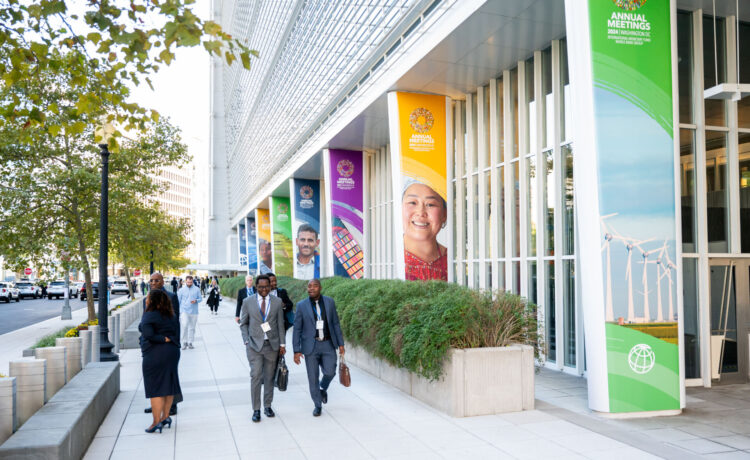The IMF and World Bank Annual Meetings in Washington DC concluded without major announcements but significant discussions on climate finance. Despite the quieter atmosphere compared to previous years, G20 finance ministers endorsed several working group recommendations, with impending negotiations on the New Collective Quantified Goal (NCQG) serving as a focal point. As preparations for COP29 intensify, the meetings underscored the need for MDBs to further scale up their role as a key delivery mechanism for global climate finance.
Key takeaways from the IMF/World Bank meetings
World Bank incremental on reforms: One expected move was reducing the Bank’s equity-to-loan (E/L) ratio to 18%, providing additional lending flexibility of $3bn/yr. Another key announcement was that shareholders can now provide Enhanced Callable Capital, a prescribed buffer for the Bank to mobilize resources, but an insufficient substitute for more comprehensive callable capital reform called for by the G20. Finally, the new Corporate Scorecard attracted attention, signaling a shift in the Bank’s focus toward transparency and accountability. By offering a clear set of metrics to assess performance, the Scorecard offers a tool for tracking global development and climate outcomes, though further progress will be needed in a number of areas such as on GHG emissions data. Beyond the World Bank, there was progress on innovative financial mechanisms amongst regional banks, with the Inter-American Development Bank announcing a $1bn securitization transaction through the launch of its ‘originate to share’ model.
National finance commitments are few: Brazil’s announcement of a $10.8 billion country platform centred around conservation and green industrial hubs stole headlines. The platform model aligns with emerging market trends to integrate economic growth with environmental preservation and further evidences country platforms moving from rhetoric to practice. Such frameworks could serve as blueprints for other countries to secure climate financing in partnership with MDBs. Among the few country-specific commitments, Japan’s $1 billion guarantee to IBRD stood out, reinforcing its support for global challenge initiatives. Lastly, Spain announced an increase in its IDA contribution, matching Denmark’s commitment to reach nearly a 40% increase. Similar increases from major donors are needed for IDA – the world’s largest provider of adaptation finance – to meet its mobilisation target.
Core issues behind the scenes
While public announcements were modest, substantive conversation occurred behind the scenes regarding the fate of international financial architecture (IFA) progress to unblock finance flows via debt, governance, prudential, and tax reforms. G20 finance ministers articulated moderate pathways forward, as evidenced by key climate finance statements in their final communique. IDA commitments were another critical area, with donors exploring a minimum target of $105 billion—a BAU maintenance in real terms relative to 2021. Continuation of the World Bank’s “evolution” process was ever-present, as stakeholders debated whether and how to pursue full implementation of the Capital Adequacy Framework (CAF) reforms to increase headroom, or pivot to a General Capital Increase campaign (in reality both are needed). With a shareholder review slated for 2025, leaders will need to address geopolitical dynamics to map out an increased capital base for the MDB system overall.
Where next? The Road to Baku
Looking ahead to COP, the central question is whether the incremental progress made in Washington DC can support a successful outcome on climate finance. As part of a wider basket of measures to increase support and investment, further evolution of the MDBs and IMF will be crucial for achieving the level of climate finance needed to deliver an ambitious global target. To realize this potential, countries will need to reach a clearer consensus. The G20 Leaders’ Summit, coinciding with COP, provides MDB shareholders with one last chance to signal their collective ambition and commitment to climate finance this year. A strong IDA replenishment outcome in December would solidify financial support for low-income countries. Major donors can build confidence in providing concessional adaptation finance by announcing increased IDA commitments in advance of COP.
The IMF/World Bank Annual Meetings may not have delivered sweeping reforms, but they highlighted the foundational shifts needed to make climate finance work on a global scale. Progress will require bridging geopolitical divides, securing enhanced financial commitments, and achieving consensus on long-term political strategies. As we await COP, the path ahead demands coordinated action from MDBs, shareholders, and the international community.
















